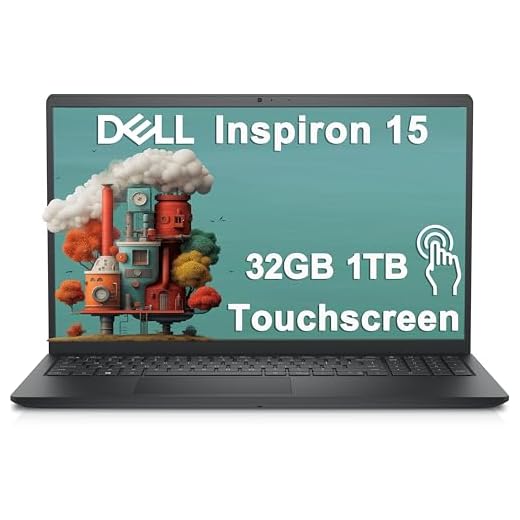







When it comes to choosing the right operating system for your laptop, the options can be overwhelming. Windows, MacOS, and Chrome OS all have their own strengths and weaknesses, making it difficult to determine which one is the best fit for you. In this article, we will explore the features and benefits of each operating system, helping you make an informed decision and find the perfect match for your laptop needs.
Understanding the Basics of Operating Systems
Definition of Operating Systems
An operating system (OS) is a software that manages computer hardware and software resources and provides services for computer programs. It acts as an intermediary between the computer hardware and the user, allowing the user to interact with the computer and run applications smoothly. The operating system controls and coordinates the various parts of the computer system, including the processor, memory, storage, and input/output devices.
The Role and Importance of an Operating System
The operating system plays a crucial role in determining the overall performance and functionality of a computer. It provides a platform for other software programs to run and ensures that the hardware components are utilized efficiently. Some of the key functions of an operating system include:
Process management: It handles the execution of multiple processes and allocates system resources to ensure optimal performance.
Top RatedSwissGear 5505 Backpack for LaptopsComfortable and versatile daily carry bagThis SwissGear 5505 backpack offers a spacious main compartment with additional organization pockets, padded shoulder straps, and dual water bottle holders, ensuring comfort while carrying your laptop and essentials. Built for durability, it also comes with a 10-year warranty.Memory management: It manages the allocation and deallocation of memory space for different processes, allowing them to run smoothly without interfering with each other.
File system management: It provides a structured way to store and retrieve files, ensuring data integrity and accessibility for users and applications.
Device management: It enables the computer system to interact with various devices such as printers, scanners, and external storage devices.
User interface: It provides a graphical or command-line interface that allows users to interact with the computer and perform tasks.
In summary, operating systems are essential components of any computer system, as they provide a stable and efficient environment for users and applications to work in.
Overview of Windows OS
History of Windows OS
Windows OS, developed by Microsoft, has a long and rich history dating back to the 1980s. The first version, Windows 1.0, was released in 1985 and offered a graphical user interface (GUI) that was a significant departure from the command-line interfaces of the time. Over the years, Microsoft has released several major versions of Windows, including Windows 95, Windows XP, Windows 7, Windows 8, and the latest version, Windows 10.
Understanding the User Interface and Features
Windows OS is known for its user-friendly interface, featuring a taskbar, start menu, and desktop icons. The start menu allows users to easily access their applications, files, and system settings. Windows also supports multitasking, allowing users to run multiple programs simultaneously and switch between them seamlessly.
One of the standout features of Windows OS is its extensive software ecosystem. Windows is compatible with a wide range of applications, making it a popular choice for both personal and professional use. Whether you need productivity tools, creative software, or gaming applications, you can find a vast selection of options for Windows.
Major Versions of Windows OS
Over the years, Microsoft has released several major versions of Windows, each with its own improvements and features. Some notable versions include:
Windows XP: Released in 2001, Windows XP introduced a more stable and user-friendly interface compared to its predecessor, Windows 98. It became one of the most widely used versions of Windows.
Trending NowASUS E410 Series 14-Inch LaptopCompact and efficient Windows 10 deviceThe ASUS E410 is an ideal laptop for everyday use, featuring a sleek 14-inch HD display and a powerful Intel Celeron processor, ensuring smooth performance for both work and entertainment. It’s equipped with sufficient storage and memory for all your digital needs.Trending NowASUS E410 Series 14-Inch LaptopCompact and efficient Windows 10 deviceThe ASUS E410 is an ideal laptop for everyday use, featuring a sleek 14-inch HD display and a powerful Intel Celeron processor, ensuring smooth performance for both work and entertainment. It’s equipped with sufficient storage and memory for all your digital needs.Windows 7: Released in 2009, Windows 7 improved upon the foundation of Windows XP and introduced several new features, including a revamped taskbar, improved performance, and enhanced security.
Windows 10: Released in 2015, Windows 10 is the latest version of Windows and offers a wide range of features, such as the Cortana virtual assistant, Microsoft Edge web browser, and improved gaming capabilities.
Windows OS has evolved over time to meet the changing needs and demands of users, making it a popular operating system choice for laptops.

Advantages of Windows OS
Compatibility with Multiple Hardware
One of the significant advantages of Windows OS is its compatibility with a wide range of hardware. Whether you are using a desktop or laptop, Windows supports various hardware configurations from different manufacturers. This compatibility allows users to choose a laptop that best suits their needs and budget without worrying about software compatibility issues.
Rich Software Ecosystem
Windows OS has a vast software ecosystem, with a multitude of applications available for users. From productivity tools like Microsoft Office to creative software like Adobe Photoshop, Windows users have access to an extensive range of applications to enhance their productivity, creativity, and entertainment.
Flexibility in Customization
Windows OS offers users a high degree of flexibility when it comes to customization. Users can personalize their desktop backgrounds, taskbar settings, and start menu layouts to create a personalized computing experience. Additionally, Windows allows users to install and customize third-party software, further enhancing the level of customization available.
Robust Enterprise Support
Windows OS is widely used in the business and enterprise environment due to its robust support for networking, security, and collaborative tools. Microsoft has developed a dedicated suite of enterprise-focused features and services, including Active Directory, Group Policy, and Windows Update for Business. These features ensure that businesses can efficiently manage and secure their Windows-based laptops and desktops.
Disadvantages of Windows OS
Security Concerns
While Microsoft has made significant strides in improving the security of Windows OS, it still faces various security concerns. Windows is often targeted by malware and viruses due to its larger user base compared to other operating systems. Users need to be vigilant and ensure they have up-to-date antivirus software to protect their laptops from potential threats.
Frequent Updates
Windows OS regularly releases updates to address security vulnerabilities, improve performance, and introduce new features. While these updates are essential for the overall stability and security of the system, they can sometimes be disruptive. Updates can take a significant amount of time to install, and occasionally, they may cause compatibility issues with certain software or hardware configurations.
System Crashes and Blue Screen of Death
One common issue faced by Windows users is the occurrence of system crashes and the infamous “blue screen of death” (BSOD). These crashes typically occur due to software conflicts, hardware failures, or driver issues. While Windows has improved its stability over the years, users may still encounter occasional crashes that can disrupt their workflow and cause data loss.
Despite these disadvantages, Windows OS continues to be a popular choice for laptops due to its versatility, software compatibility, and flexibility.

Overview of macOS
History of macOS
macOS, previously known as Mac OS X, is the operating system developed by Apple Inc. for its line of Macintosh computers. The first version, Mac OS X, was released in 2001, building upon the foundation of Apple’s previous operating systems. Over the years, Apple has released several major versions of macOS, including macOS Mojave, macOS Catalina, and the latest version, macOS Big Sur.
Understanding the User Interface and Features
One of the defining characteristics of macOS is its iconic design and aesthetics. macOS offers a visually appealing and intuitive user interface that is known for its simplicity and ease of use. The dock at the bottom of the screen allows users to access their favorite applications, while the menu bar at the top provides quick access to system settings and features.
macOS is also known for its seamless integration with Apple’s ecosystem of devices and services. Features like Continuity allow users to effortlessly switch between their Mac, iPhone, and iPad, sharing tasks and content seamlessly. This integration enhances productivity and convenience for users who have multiple Apple devices.
Major Versions of macOS
Apple regularly releases major updates to macOS, introducing new features and improvements to enhance the overall user experience. Some notable versions of macOS include:
macOS Mojave: Released in 2018, macOS Mojave introduced a dark mode, improved privacy features, and enhanced performance optimizations.
macOS Catalina: Released in 2019, macOS Catalina introduced the ability to use an iPad as a secondary display, improved accessibility features, and enhanced security measures such as Gatekeeper for app security.
macOS Big Sur: Released in 2020, macOS Big Sur introduced a redesigned user interface, increased performance, improved privacy features, and expanded compatibility with Apple Silicon.
Advantages of macOS
Superior Design and Aesthetics
macOS is renowned for its sleek and visually appealing design. Apple’s attention to detail and focus on aesthetics creates a pleasant and intuitive user experience. The clean and minimalist interface allows users to focus on their tasks without unnecessary distractions.
Strong Security Features
macOS is often touted for its strong security features, making it a popular choice for users concerned about privacy and data protection. Features like Gatekeeper, FileVault, and Safari’s Intelligent Tracking Prevention help users keep their data secure and protect their privacy while browsing the web.
Indepth Integration with Apple Ecosystem
For users heavily invested in the Apple ecosystem, macOS offers seamless integration with other Apple devices and services. The ability to answer phone calls, send and receive messages, and access shared files across multiple devices creates a unified and efficient workflow.
Reliability and Stability
macOS is known for its stability and reliability, with fewer system crashes and software conflicts compared to other operating systems. Apple’s strict hardware-software integration allows for better optimization and fewer compatibility issues, resulting in a smooth and consistent user experience.

Disadvantages of macOS
Limited Hardware Compatibility
One of the major disadvantages of macOS is its limited hardware compatibility. macOS can only be legally installed on Apple’s own Macintosh computers, restricting users who prefer other hardware configurations from using the operating system. Apple’s emphasis on hardware-software integration has resulted in a closed ecosystem that limits user choice in terms of hardware customization.
Expensive
Compared to other operating systems, macOS can be relatively expensive. Apple’s line of Mac computers tends to have a higher price point compared to Windows or Chrome OS-based laptops, making them less accessible to users on a tight budget.
Lack of Customization Options
While macOS offers a visually appealing interface, it has limited customization options compared to other operating systems. Users who prefer a high degree of customization and control over their operating system may find macOS restrictive in terms of personalization options.
Despite these limitations, macOS continues to be a popular choice among creative professionals, students, and individuals who prioritize design, security, and integration with other Apple devices.
Overview of Chrome OS
History of Chrome OS
Chrome OS, developed by Google, is an operating system designed primarily for devices such as Chromebooks, Chromeboxes, and Chromebases. It was first released in 2011, with the goal of providing a simple, fast, and secure computing experience for users.
Understanding the User Interface and Features
Chrome OS features a minimalist user interface that resembles the Google Chrome web browser. The user interface is designed to be intuitive and easy to navigate, making it an ideal choice for users who prefer a streamlined computing experience. Chrome OS emphasizes web-based applications and cloud services, with the majority of tasks performed through the Chrome browser.
One of the standout features of Chrome OS is its fast boot times and overall performance. Chromebooks, which run Chrome OS, are known for their quick startup times and responsiveness, allowing users to get to work or enjoy their content without delay.
Major Versions of Chrome OS
As Chrome OS is a relatively young operating system, it has undergone several major updates and improvements over the years. Some notable versions include:
Chrome OS 34: Released in 2014, Chrome OS 34 introduced a new app launcher and improved multi-monitor support.
Chrome OS 71: Released in 2018, Chrome OS 71 introduced the ability to run Linux applications on Chromebooks, expanding the range of available software for users.
Chrome OS 88: Released in 2021, Chrome OS 88 introduced improved tablet support, enhanced virtual desktops, and expanded Linux container functionality.
Advantages of Chrome OS
Speed and Performance
Chrome OS is designed to be lightweight and optimized for speed. Chromebooks, running Chrome OS, typically have minimal hardware requirements, allowing them to run smoothly even on lower-end hardware configurations. The emphasis on cloud-based computing and web applications also contributes to faster performance, as tasks are offloaded to remote servers.
Cloud-Based Operation
One of the major advantages of Chrome OS is its seamless integration with cloud services. Chromebooks are designed to store most of the user’s data and applications in the cloud, reducing the reliance on local storage. This cloud-centric approach allows users to access their files and applications from any device with an internet connection, enhancing mobility and reducing the risk of data loss.
Cost-Effective
Chromebooks tend to be more affordable compared to laptops running other operating systems. The lower price point, coupled with the minimal hardware requirements of Chrome OS, makes Chromebooks an attractive choice for budget-conscious users, students, and educational institutions.
Seamless Integration with Google Services
Chrome OS integrates seamlessly with Google’s suite of services, including Gmail, Google Drive, and Google Docs. Users can access their Google accounts and services effortlessly, allowing for efficient collaboration and productivity.
Comparisons and Final Verdict
Comparing the Performance
When it comes to performance, each operating system has its strengths and weaknesses. Windows OS offers compatibility with a wide range of hardware configurations but can sometimes be resource-intensive, depending on the specific version and software being run. macOS, on the other hand, is known for its reliability and stability, with optimized performance on Apple’s own hardware. Chrome OS excels in speed and efficiency, particularly on lower-end hardware, thanks to its lightweight nature and emphasis on cloud-based computing.
Comparing the Security
In terms of security, macOS has a strong reputation for its built-in security features, regular updates, and strict control over software distribution through the App Store. Windows OS has made significant improvements in recent years, with Windows 10 introducing advanced security features such as Windows Defender and built-in ransomware protection. Chrome OS benefits from its architecture, which is built around a sandboxing model and automatic system updates, minimizing the risk of malware infections and ensuring a secure browsing experience.
Comparing the Cost
When it comes to cost, Windows OS offers a wide range of options to fit different budgets. Windows laptops can be found at various price points, from affordable entry-level devices to high-end gaming or professional laptops. macOS, being exclusive to Apple’s hardware, tends to have a higher price tag across the board. Chrome OS, on the other hand, is often the most cost-effective option, with Chromebooks being available at budget-friendly prices.
Final Thoughts on Choosing the Right OS for Laptops
Choosing the right operating system for your laptop ultimately depends on your specific needs, preferences, and budget. Windows OS offers the broadest software compatibility and customization options, making it a versatile choice for a wide range of users. macOS, with its superior design, integration with Apple’s ecosystem, and strong security features, is a popular choice among creative professionals and users heavily invested in the Apple ecosystem. Chrome OS, with its focus on speed, efficiency, and cost-effectiveness, is an excellent option for users who primarily use web applications and value mobility.
Consider your requirements, software preferences, and budget to make an informed decision when choosing the operating system for your laptop. Remember to weigh the advantages and disadvantages of each OS and explore user reviews to ensure it aligns with your needs. With the right operating system, you can optimize your laptop experience and enjoy a seamless and efficient computing journey.





